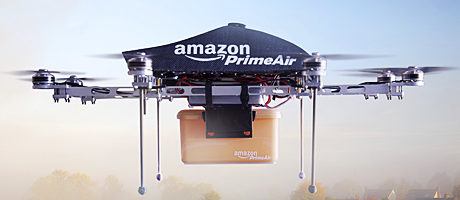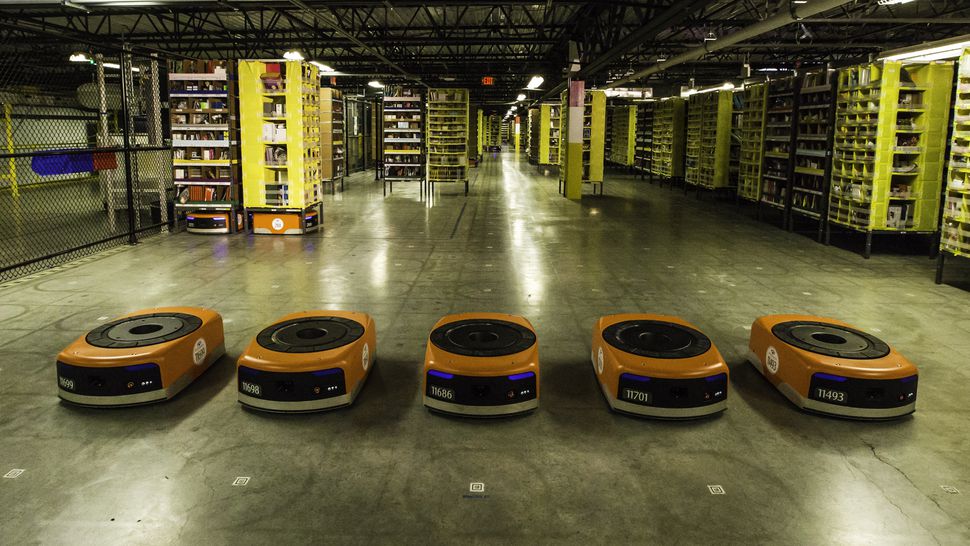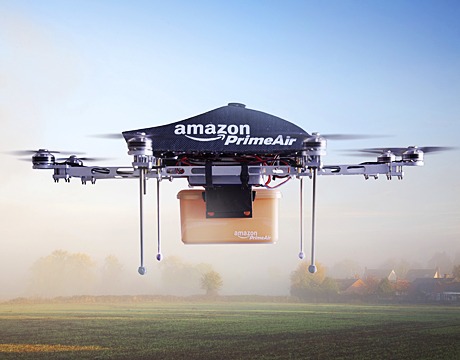How Amazon – the most valuable retailer in the world is dealing with digital disruption

Amazon recently became the world’s most valuable retailer[1] – and is arguably the most innovative. The question is whether Amazon can stay ahead in the digital world in the face of strong competition from Walmart and others.
Industry Context:
The retail industry is undergoing a major transformation[2] – with the pervasiveness of the internet and the advent of the omni-channel shopper. In this new world of retail, consumers are more empowered than ever before. In addition the advent of IoT is disrupting tradition distribution models for retailers [3]. Amazon has adapted extremely well to this new world of retail with several innovations while staying true to its basic value proposition of price and convenience. The greatest threat to Amazon’s position is from Walmart which recently purchased Jet.com – dubbed a potential “Amazon killer” by FT[4] and is investing heavily in technology[5]. Let us look at some digital initiatives by Amazon.
Amazon Dash[6]:
The basic concept behind dash is to leverage technology to make the process of ordering more convenient – and inherently linked to Amazon. The simpler variant of this system is the dash button – which can be programmed to order specific purchases at the click of a button. This is most popular with consumables like detergents and the like. The more ambitious part of the program is the Dash Replenishment Service, which allows manufacturers to add auto-detection capabilities to their IoT devices to reorder supplies from Amazon when necessary – “like a Whirlpool washing machine that orders laundry detergent before your last load.”
Alexa – digital assistant & IoT platform:
Perhaps the more interesting response of Amazon to the digitization challenge has been the creation of the Alexa digital assistant platform and accompanying devices like the Echo. The goal with this platform is to become the centerpiece of the IoT smart home. Amazon has opened up this Alexa platform to developers so they can build features for their devices that integrate with the platform[7]. It currently is used with lights, switches, thermostats and other daily appliances but the future is not far where this could be centerpiece of your digital life. Ford recently announced that it would integrate Alexa into its cars [8] – so one can start your car using the Alexa platform. In fact Steve Wozniak thinks Amazon’s Echo is the next big platform[9] . With Alexa is that Amazon is making the bet that if they are at the centerpiece of your IoT experience they can sell more products to you!
Kiva:
The digital revolution has also fundamentally altered the fulfillment process for Amazon – at the heart of the entire process the distribution center. Today, Amazon has over 30,000 autonomous Kiva robots that travel through 13 distribution centers and pickup items for delivery[10]. The robots are controlled by a centralized computer using a Wifi Network. An interesting anecdote is that each each robot is given a different name by an Amazon employee so they view the robots as peers.
Drone deliveries? [11]:
The most glamorous part of Amazon’s IoT strategy it the promise of Amazon Prime Air where Amazon promises deliveries in under 30 minutes with the use of IoT drones. Amazon does acknowledge that this service is some distance away in the future given the regulatory challenges – but I believe the purpose of this program is to capture customer imagination and be seen as a leader in the IoT field.
I believe the key to the success of these initiatives by Amazon is that the focus has always been on how each device affects the overall customer experience vs a cool device itself. In order to continue to lead in the market I suggest the following steps for amazon.
Heavily subsidize Alexa so that it become the customer platform of choice:
The Amazon Echo – the preferred device for the Alexa platform currently costs $180 and has sold only 3 million units. I would advocate that the Echo price is substantially dropped or even more radically offered for a token price to all the approximately 60 million Amazon Prime households. The reason I advocate this move is that Alexa could become the centerpiece of the IoT environment and then other IoT manufacturers would have to collaborate with amazon.
Continue to stay at the cutting edge of logistics:
In 2016, Amazon spent nearly $5 billion on shipping costs[14] and is pursuing various initiatives to reduce those costs. I would suggest that Amazon keep investing in digital infrastructure as in the case of Kiva to ensure they are able to keep reducing those costs.
I look forward to hearing your perspectives on how Amazon is dealing with the challenge of digital disruption.
Word Count: 731 words
[1]https://www.bloomberg.com/news/articles/2015-07-23/amazon-surpasses-wal-mart-as-biggest-retailer-by-market-value
[2]https://www.bcgperspectives.com/content/articles/retail_digital_economy_retail_2020_competing_in_changing_industry/
[3]http://blogs.sas.com/content/sascom/2016/06/20/disruption-from-the-internet-of-things-are-you-ready/
[4]Https://www.ft.com/content/69a91ec0-5d64-11e6-bb77-a121aa8abd95
[5]http://fortune.com/2016/04/29/walmart-tech/
[6]https://developer.amazon.com/dash-replenishment-service
[7] http://www. alexa.amazon.com
[8]http://www.inc.com/justin-bariso/the-battle-between-apple-amazon-and-google-to-run-your-home.html
[9]http://fortune.com/2016/03/12/steve-wozniak-echo-next-big-platform/
[10]Http://www.informationweek.com/strategic-cio/amazon-robotics-iot-in-the-warehouse/d/d-id/1322366
[11]Https://www.amazon.com/b?node=8037720011
[12] http://www.geekwire.com/2016/report-amazon-sold-3-million-echo-smart-speakers-awareness-grows/
[13] http://fortune.com/2016/07/11/amazon-prime-customers/
[14]http://www.geekwire.com/2016/amazons-net-shipping-costs-top-5b-for-first-time-fueling-push-to-build-out-its-own-delivery-network/






I really like the suggestion you made about pricing the Amazon Echo intentionally low in order to increase the prevalence of those devices in peoples homes, tying all of their IoT devices into the Amazon ecosystem. Particularly with Google’s release of Google Home (currently priced at $50 cheaper), time is of the essence for Amazon if it wants to stave off the competition for the home automation device space.
Amazon definitely is levered to “digital trends” in many ways, but I think that perhaps the most important digital initiative in Amazon’s corner is AWS. The growth of IoT has spawned a rapid increase in amount of data being generated by customers, and that data needs to be stored somewhere, particularly the cloud. As the market leader with a 31% share in cloud computing, AWS is in a prime position to continue its >50% annual growth. Additionally, given the slim margins of the Amazon retail business, AWS’s higher margins make it the crown jewel.
Very interesting posts. I certainly support subsidizing products such as Amazon Dash and Alexa. The future prospects from these products are much higher than the profit Amazon can create from selling them at a premium. Amazon needs to capture and maintain the biggest market share possible, and locking customers to its services using such products is a unique advantage. As we learned in several of the cases this week (Uber, Watson), moving fast and being aggressive is a must in the digital world. Lagging behind on Alexa sales will pave the way for competitors (Google Home was mentioned in a previous comment as a potential threat. A comparison between these products can be found here – WSJ: http://www.wsj.com/articles/google-home-vs-amazon-echo-which-robot-do-you-let-into-your-life-1478544438).
Great post Hari and brilliant suggestion to subsidize Alexa and Amazon Echo. Fully agree that IoT will be huge for Amazon and that they should be all-in on winning that platform battle.
One thought: no matter what form the various networked IoT devices take, there is a high chance they will use a smartphone or other wearable as the primary customer control interface. This is the “path of least resistance” for the consumer, and history shows that consumers typically don’t choose dedicated hardware for a given use case unless that hardware provides a “10x experience.” For example, the introduction of Apple Health placed significant pressure on companies like FitBit and Jawbone. For many customers, Health was a “good enough” solution.
I question what makes Echo and/or Alexa the rightful winner to be the controlling platform for IoT, vis a vis smartphones or wearables. Is it voice control? We have Siri and Cortana. To win with consumers – and first with device manufacturers – Amazon will need to make a case for how its ecosystem can create more value than Apple or Google’s.
An alternative strategy is to recognize that the future IoT platform owner is very much in the air, and partner with Apple or Google to extract some margin from Amazon’s distribution power. Amazon has the clout to be a “kingmaker” in this regard with its massive customer count and has great leverage to make the potential king pay up for preferential access to those customers.
Great post! I’m a big fan of Amazon’s technologies, but am concerned about the following points when it comes to consumer facing technological advancements:
1) As Sam had rightly mentioned, the AWS suite is Amazon’s top business categories functioning as a B2B business. However, I’m really concerned that when the new additions to Amazon’s product range start coming out for mass use, how would they maintain their bottom-line, given Amazon’s immense focus on customer satisfaction.
2) Second, I wonder when (and how many) of these technologies find real applications. The reason for my concern stems that having such a wide array of products makes sense for a company like Google, however, am not fully able to appreciate how flexible will Amazon’s business model be in absorbing such technologies.
Would love to hear your thoughts on them!